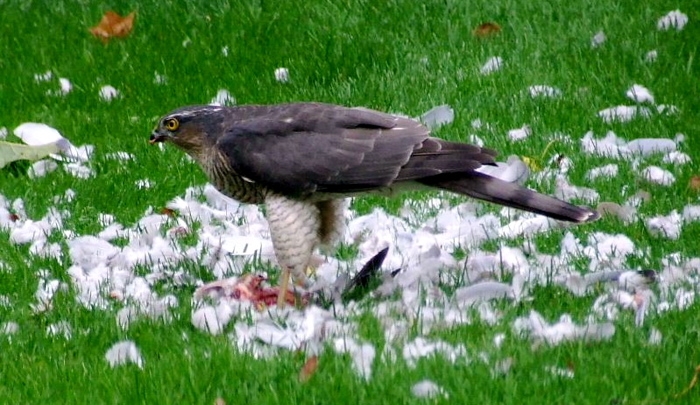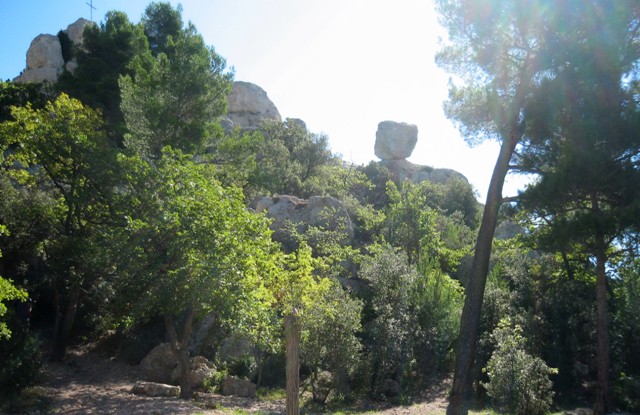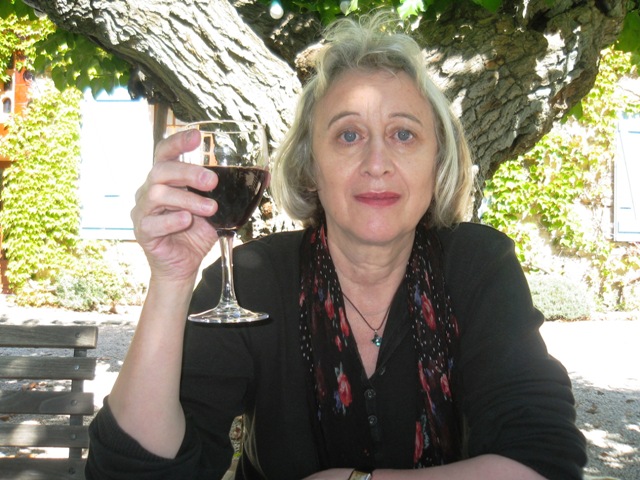Tuesday, October 31, 2006
SUSTAINABILITY RETREAT
Written, belatedly, on 12 November:
October 30-31 saw the full SustainAbility team (now exceeding 30) engaging in an extremelysuccessful retreat at The Orangery, Kew Gardens. Tremendously invigorating – and the new strategy is coming together very well. Due to problems with Blogger, I didn’t capture the spirit of the thing at the time, and also agreed not show team members in their extraordinary Halloween costumes after our fancy dress at the Bluebird Restaurant, which has somewhat cramped my style!
But here are a few less peopled photographs to give a sense of the proceedings. The Earthlife health poster caught my eye, given that it was the unravelling of a different Earthlife in 1986 that led to our founding of SustainAbility early in 1987. On the second day, I took much of the team around the Princess of Wales greenhouse (showing them the time capsule Elaine dreamed up and Gaia Books, David Attenborough and others of us installed in 1985) and the Palm House.

Poster en route to Kew

Early morning sun

The lion and the unicorn

Pumpkin Man

Symbolic, perhaps, of our quest to find the levers of power …

Handscape

Angelic corner in The Orangery

Kelly at speed

Squash 1

Squash 2

Time capsule, Princess of Wales Greenhouse

Maggie Brenneke and Mr Mystery (or Mr E: thanks, Sam)
Thursday, October 26, 2006
A WEEK OF CONVERSATIONS
A somewhat fractured week of writing, including a long paper for a new Indian magazine called Triple Bottom Line, team discusions and meetings – or perhaps I should say conversations, which are the fuel which drive much of what we do. Among others, these included lunch with Michael Meacher, MP (http://www.epolitix.com/EN/MPWebsites/Michael+Meacher), on Monday; a gentle walk across to IIED (http://www.iied.org) with Mark Lee on Tuesday to see IIED Director Camilla Toulmin – the first time I had been at IIED for what seems like many a year; a morning meeting on Wednesday with Charles Middleton, Managing Director of the UK end of Triodos Bank (http://www.triodos.co.uk/uk/?lang), who is also Chairman of the Haller Foundation, of which I am a Patron (http://www.thehallerfoundation.com/governance.html); a session later in the day with Sophia Tickell’s sister Alison and her colleague Shelagh Wright, to discuss the creative sector in the UK; and then, on Thursday later afternoon, I walked across to The Athenaeum with Geoff Lye for a meeting with Fields Wicker-Miurin and Tom Wright of Leaders’ Quest (http://www.leadersquest.org/index/articles.php?id=126&page=Partners&navi_id=2), having first met Fields in Davos earlier in the year.
The meeting at the Athenaeum – Fields noted in the process that Darwin and Dickens had joined the club on the same day, which suggested some interesting conversations – put me in mind of one of the pivotal meetings of my life, late in 1977 or early 1978, when Max Nicholson asked me across to the Athenaeum for tea. This was to discuss whether I would join Max and David Layton of IDS in setting up Environmental Data Services (ENDS), which we did later in 1978 (http://www.ends.co.uk/). I asked for several months to do a feasibility study while remaining at TEST, but in the end concluded that it was worth making the jump. Thank heavens.
Footonote: I never joined a club, partly because they seemed saurian, partly because I lived in London anyway, partly because I couldn’t afford it, but mainly because they didn’t let in women. Even the Athenaeum, which seemed fairly lively at times, seemed to be largely populated with old grey men in sofas – who seemed so settled that it was almost impossible to see where the old men ended and the sofa or armchair began.
Tuesday, October 24, 2006
GIBBERD, THRING & COOLING TOWERS
Two people I glanced off in recent decades appeared cheek-by-jowl in the obituary columns of The Times. The first was Professor Meredith Thring, a scientist and engineer driven by the notion that engineers should have a social conscience. One of his passions was energy – and fuel technology in particular. During WWII, he led a project to run vehicles on producer gas, made from wood to save petrol. Another, later scheme, was a key reason I came across his work: the development of ways of harvesting water hyacinth, an aggressive water weed, and turning it into food.
Whether or not they ever met, Thring turned up cheek-by-jowl this morning with Lady Patricia Gibberd, who was involved in the development of Harlow New Town, designed by her husband Sir Frederick Gibberd. We met them both over dinner over 30 years ago, thanks to her nephew Toby Greenbury, with whom Elaine and I shared a flat in Belgravia. One of my memories of the dinner is our discussion of Gibberd’s design of the cooling towers at Didcot, which we used to pass regularly on our way by train down to the Cotswolds. The Gibberds waxed lyrical about the beauty of the cluster of cooling towers, something I confess I struggled to see.
But in recent days I had been struck in reading England in Particular, by Sue Clifford and Angela King, to see them also wax lyrical on cooling towers, in an entry squeezed between confectionery and corn dollies. “What a magnificent presence they have, these great chess castles gathering beside rivers as if for communal ablutions,” Clifford and King begin. “They steam away water and heat generated by the making of electricity from coal.” They mention Didcot, too, noting that the towers there “dominate views acros the Thames Valley and from Wittenham Clumps.” Protypically Clifford/King, that last bit.
Still, I don’t share their regret that, “Perhaps during the next twenty years these structures will disappear, taking their functional beauty into the history photographs.” They note that the dismantling of a single cooling tower near the M6 in Birmingham “proved disorientating.” True, I’m sure, but this is an area where we need to be disorientated, as I am sure Professor Thring would have agreed. Cooling towers are the most visible component of a fossil-fuel-to-electricity cycle which on the same time-scale will come to look criminally insane.
Much of the latent energy in the fuels is dumped into the atmosphere as steam. I remmeber visiting expreimental units aiming to use waste hot water to produce tomatoes, eels and such-like, though in the end most of them bit the commercial dust. The old CEGB, when I was a member of their Environmental & Development Advisory Panel for several years in the pre-privatization era, used to insist that the steam wasn’t pollution. But it has always signalled profligate inefficiency – and still does. Those cloud-making towers stand as symbols of an era of dinosaur technology.
Sunday, October 22, 2006
MURDEROUS NEIGHBOUR
Red in beak and claw, to mutate Tennyson. One of the neighbouring sparrowhawks on the Hill House lawn, photographed a couple of days ago by my father, Tim. The debris appears to have been one of the collared doves that are such a prominent part of the local acoustic environment. Sparrowhawks have come back in force, apparently, among other things decimating a neighbour’s dovecot at the bottom of Little Rissington Hill.

Saturday, October 21, 2006
APPLE DAY
Today was Apple Day, a celebration of local distinctiveness and diversity in terms of apples. Elaine brought back Orange Kidd apples from the Farmer’s Market in Barnes which deserve to be arrayed as artworks, for their glorious colours, but turned out to be wildly delicious too. Apple Day was launched many moons ago by one of my favourite charities, Common Ground. Two of the co-founders were Sue Clifford and Angela King who I first came acros when they were at Friends of the Earth. The culmination of their Common Ground efforts is a book I bought a couple of weeks ago, England in Particular. As Cleve West notes in today’s Independent Magazine, the book is “an almost biblical record of everything from accents and anty-tumps (anthills) to zigzags (a way to negotiate hills) and zawns (narrow recesses in cliffs).” I also came across one of my favourite artists, Peter Randall-Page (http://www.peterrandall-page.com/), ages ago thanks to Common Ground, who at the time were creating wayside shrines for walkers.
Friday, October 20, 2006
NAU AND BEST FOOT FORWARD
Matt (Loose) and I are finishing off the last bits of our 2006 Global Reporters survey, which is shaping up nicely. Craig Simmons of Best Foot Forward (http://www.bestfootforward.com/) comes in to give Mark (Lee) and I a briefing on their ecological footprinting methodology, which underpins WWF’s impending One Planet Business offering – which Seb (Beloe) and I have been helping with. Hard at work writing columns for the likes of Grist (with Mark), European Business Forum (with Geoff Lye) and Director. Late in the afternoon, Mark and I do a teleconference with a fascinating new start-up based in Portland, Oregon, called Nau (http://www.nau.com). They are largely refugees from companies like The Gap, Nike and Patagonia, and their sustainability strategy sounds world-class. They launch their first products in January. Worth watching, I think.
Wednesday, October 18, 2006
SHELL AND ECGD
Another hectic day, much of it spent with Shell. Niel Golightly, who we worked with when he was with Ford, has moved to Shell as VP for External Affairs & Communications in the company’s Downstream business, which stretches from bitumen and refineries to chemicals. I had to do two short presentations, one on climate change and one on the wider public agenda. Good people, some tough issues, lively discussion.
Then on to a dinner at Lancaster House this evening, hosted by Ian MacCartney, Minister of State for Trade – the annual ministerial convening of the members of the Export Credits Guarantee Department’s Advisory Council, which I chair. Walked from Waterloo, where the Shell event was held, across to St James, stopping off at Waterstone’s in Piccadilly on the way – where I bought three books, including two novels (one of which was Blue Man Falling) and The Goldilocks Enigma, which poses the question why the universe is so suited to life, at least in our neck of the woods. Weird October weather: by the time we were having a pre-dinner drink in Lancaster House the temperature was almost tropical, hot and steamy.
One issue on the agenda was the recent NGO proposal that the Advisory Council should consider ‘live’ cases like Sakhalin, the giant oil field being developed in Russia by Shell and Exxon. (At the moment, the Advisory Council only considers cases that have already been decided.) Sakhalin was already controversial, because of alleged environmental impacts, but has become a good deal more so now that the Russians have stalled a permit, on environmental grounds – though it is hard to believe that they care a fig about the environment. If the Advisory Council did shift to live cases, which it seems that we are unlikely to do, I would probably have to “consider my position,” straddling as I now find myself doing the worlds of oil and export guarantees. Meanwhile, it’s a fascinating opportunity to work on some of the issues that exporters are increasingly expected to manage, among them bribery and corruption, human rights and sustainable development.
Sunday, October 15, 2006
AIX ET MAS DES GRAVIERS
And here are some shots of Aix-en-Provence, Mont Sainte-Victoire and Mas des Graviers, where we celebrated the sixtieth birthday of Jan-Olaf Willums. On the evening of the celebration, there was a jazz band and 38 guests.

Museum window, Aix

Heads in a museum, Aix

Roadworks

Four Dolphins

Mont Sainte-Victoire 1

Mont Saint-Victoire 2

Elaine on Mont Sainte-Victoire

Praying mantis

Parasail

Cleared for replanting of vines

Elaine 1

Elaine and Pastis

Elaine and Doris

Elaine 2

Breakfast begins

Jan-Olaf

Mas des Graviers, masking the pool
Saturday, October 14, 2006
CYCLE COMES HOME FROM HOSPITAL
Have more or less finished wading through the pile of newspapers that built up while we were in Provence. After a session with the opticians this morning, where it turned out that I have embyonic cataracts, I walked across Putney Common to pick up my bike, finally repaired after my entanglement with the Mongolian woman (see 23 August entry). Also bought a radiant fluorescent yellow jacket to try to ensure that future autopredators see me a little earlier. Ribs almost mended, but, my, it takes a while. We really ought to have laws like those in Amsterdam, where it’s universally assumed that drivers are at fault in accidents involving cyclists. Things can swing too far the wrong way, of course, but we have a fair way to go before we are in any danger of that here.
Friday, October 13, 2006
FRIDAY 13
One explanation for the dark reputation of Friday 13 was the destruction of the Knights Templar in 1307 (http://en.wikipedia.org/wiki/Friday_the_13th), launched on Friday, October 13 – which will make the same date next year something of a milestone. Today, though, has been fun. First meeting, organised by Charles Perry of Green Order (http://www.greenorder.com/), was with Nick Hurd MP and Clare Kerr of the Conservative Party’s Quality of Life Policy Group (http://www.conservatives.com/tile.do?def=news.story.page&obj_id=126829, though the link to the Policy Group website didn’t work when I tried it). I can’t imagine ever voting Conservative, but I emerged impressed with what they are trying to do in such areas as climate change, quality of life and sustainable development.
Then Paloma Berenguer of Shell came across to brief me on a session on sustainable development I am due to do there next week. Next, among other meetings, we had a lively session with Marcos Egydio Martins, Chief Sustainability Officer of Natura (one of the most interesting of the many hundreds of companies I have visited and certainly the most impressive in Brazil, see http://www.natura.com/) and Simon Lyster of LEAD International (http://www.lead.org/member/2566). Later, John Ganzi came in to talk about a fascinating new social enterprise he is developing in the area of sustainable tourism.
And all this in the midst of my efforts to keep on track with the final bout of writing for our Global Reporters benchmark survey. The main section I worked on today covered corporate reporting in the emerging economies, or non-OECD world, and in the end quite well.
In the evening, I collapsed on the sofa to watch The Death of a President on TV. In many ways it’s shocking that they would do such a program on the assassination of a living President, but equally this President is likely to be remembered as a special case, a man who – as a Financial Times columnist argued earlier in the week – has done more than anyone else to make the ‘Axis of Evil’ a reality. I can’t help but enormously admire this week’s statement on the Iraq War by General Sir Richard Dannatt.
SHOULD YUNUS HAVE WON THE ECONOMICS PRIZE?
Sent a congratulatory note today to Muhammad Yunus (http://en.wikipedia.org/wiki/Muhammad_Yunus) on behalf of SustainAbility, after hearing the news that he had won this year’ Nobel Peace Prize (http://nobelprize.org/nobel_prizes/peace/laureates/2006/). It did make me wonder, however, whether it mightn’t have been more interesting if he had won the Economics Prize. If the socioeconomic side of sustainable development is ever to be achieved, his work on microcredit will be critical. Some years back, I was thrilled when the UK paperback of his book Banker to the Poor sported a quote from me, extracted from a review I had done for The Guardian. His work with Grameen – including the new partnership with Danone on local yoghurt production – is central to the book I am doing with Pamela Hartigan.
Thursday, October 12, 2006
CAN PROPERTY THRIVE IN A CHANGING CLIMATE?
Across to Claridge’s first thing this morning, to speak at the Estates Gazette Summit 2006, on the theme of how the property industry can thrive in a changing climate. Estates Gazette editor Peter Bill kicked off with comments about how weird the UK’s weather is at the moment, which is certainly true – at times it’s like June and quite sticky. He was followed by John Gummer, as co-Chairman of the Conservative Party’s Quality of Life Commission. One of the things he said was that any property develop who has been buying up land for development around airports could be in for a rude shock when the air travel business goes into something of a tailspin – and the Government imposes controls on further airport expansion.
I followed on, talking among other things about the need to green the valuation of buildings, something I really woke up to when listening to Chris Corps in Canada earlier in the year. Next up was Keith Wells, Director of Strategy & Planning at Dragon and Rupert Clarke, chief executive of Hermes Real Estate. Then a fascinating presentation by Jan van Dokkum, president of UTC Power, on everything from fuel cells to to the future of elevator technology. He was followed by Yolande Barnes, research director at Savills, on the trends in demand for greener residential and commercial property. And then Sir Crispin Tickell summed up. He is now director of the Policy Foresight Programme at the James Martin Institute for Science and Civilization at Oxford.
Lunch was in the Gordon Ramsay restaurant at Claridge’s, which I cycle past regularly but had never darkened the doortstep of. Food and wine exquisite. Then raced back to the office for a session on the Pharma Futures II event we are organising in Docklands next week, bringing together top executives from the pharmaceuticals industry and major pension funds, who invest in those companies. This initiative has been developed by Sophia Tickell, our Chair – and Sir Crispin’s niece. A much more structured approach to a particular sector than anything we have attempted to date. Today’s event made me wonder whether the property sector mightn’t be a suitable future case for similar treatment?
Tuesday, October 10, 2006
99 TO 1
An interesting thing happened at today’s conference organised by the Chartered Institute of Marketing (http://www.cim.co.uk/cim/new/html/newArt.cfm?objectID=45BE13FC-A022-58D8-769BE7A98652DAB6 and http://www.cim.co.uk/conf/speakers.html). My talk followed that of marketing guru Philip Kotler (http://www.kellogg.northwestern.edu/faculty/bio/Kotler.htm), who told me that his work has consistently overlooked our agenda – and that if he gets a chance to do a 13th edition of his standard work it’s one of the areas he feels he must now engage.
Then we had a breakout debate organised in typical university fashion (though not any university I ever attended), with a motion, a proposer, an opposer and two seconds. The motion was that “the triple bottom line complicates marketing – and doesn’t help.” I opposed the motion, perhaps not surprisingly.
I have to say that I played to the gallery a bit. I noticed that over half of the audience were women. So, while my main opponent read an excellent prepared speech, I did the thing on the fly, said I had no idea how to do a formal debate (appealing to the sympathy vote), noted that TBL thinking does indeed complicate anything it touches (but, then, it’s an increasingly complex world out there), and then told two stories.
The first picked up from the proposer’s attack on what he dubbed “minstrel-driven lists” of 3Bs (me), 4Ps (Kotler) or whatever. I said I had just come back from a land – Provence – where minstrels had played a critical role in the evolution of culture. One minstrel serenaded Sermonda, the beautiful wife of the hot-blooded Raymond de Roussillon, as one was meant to be able to do in those days. Raymond promptly waylaid and slew the troubador, I learned from Lawrence Durrell’s book Caesar’s Vast Ghost. He then had the man’s heart cooked and served to his unsuspecting spouse. When she discovered what had been done, she threw herself to her death from the castle’s highest window. The perhaps inevitable result was that an appeal for revenge was made to King Arragon, who invaded with an army of freebooters and put everything and everyone to the sword.
The point I was making, in perhaps overly dramatic form, was that a culture of male domination and brutality had eventually been civilised by a social movement, the Courts of Love, catalysed by the minstrels. And what had previously seemed normal later came to be viewed as repugnant. The same would be true, I concluded, as the sustainability revolution really gets into its stride. And the vote? Well, our session attracted around 100 delegates and when it came to the vote, exactly 1 hand went up for the motion, and every other hand went up for our view of the world.
Sunday, October 08, 2006
A HOWLING AND BELLOWING AT POURRIERES
As we walked around Mas des Graviers, partly through fields laid bare where Jan-Olaf’s vines had been pulled up to plant new ones, it was hard not to think of the fact that this plain beneath towering Mont Ste-Victoire was the scene of a perfectly hideous battle in 102 BC. A huge horde of Teutons and Ambrons streamed towards Italy and Rome, with a view to sacking the city. Plutarch says that the Roman troops under Marius (http://en.wikipedia.org/wiki/Gaius_Marius) watched the barbarians stream through a gorge beneath them for six days.
Whatever the facts, Marius outwitted his enemies, who had earlier slaughtered some 200,000 Romans in a disastrous reverse. Now Marius turned the tables once again, with his men killing anywhere between 100,000 and 200,000 of the Teutons and Ambrons, and taking an estimated 80,000 prisoners. Contemporary accounts report that the beleaguered Romans awaiting a counter-attack heard instead a “crying … all through the night, not like the sighs and groans of men but like the howling and bellowing of wild beasts.”
I have all this on the authority of Lawrence Durrell, in his book Caesar’s Vast Ghost (Faber & Faber, 1990 and 2002). Again according to Plutarch, the remains of the dead were left where they had fallen, rotting in the summer heat, with the result that the area became known as Campi Putridi, or the Fields of Putrefaction. And that phrase, it seems, accounts fro the name of the nearest village to Mas des Graviers, Pourrieres.
Thursday, October 05, 2006
AIX EN PROVENCE
Some photographs from Aix en Provence, where Elaine and I have been decompressing these last few days – having come down by Eurostar and TGV. Read Sophia MacDougall’s novel Romanitas on the way down, and am now immersed in Lawrence Durrell’s Caesar’s Vast Ghost, his valedictory book on Provence.

Site of the old thermal spring

Spirals outside the thermal baths

Fountain

Statue and modern equivalents

Market

Market 2

Cross-legged pillar

Bollards
Sunday, October 01, 2006
ROYAL SECRET
When I was in Auckland last week, a number of us recalled the limpet mining of Greenpeace’s Rainbow Warrior in 1985. Today it turns out – at least according to The Sunday Times – that one of French presidential contender Ségolène Royal’s brothers was the DGSE agent who attached the mine to the ship’s hull. A Portuguese photographer was killed and the incident backfired badly on France, except in France. Still feel that Royal is an attractive proposition, politically, but what a complex world.
That complexity is also underscored by another story in the same paper, taking groups like Greenpeace, Friends of the Earth, the Soil Association and WWF to task for the many flights their top staff take – and the climate consequences, both directly and because of the example they set. SustainAbility has offset its carbon emissions from all its activities, including team members’ lifestyles, for many years – and, in the case of client projects, has long invited clients to double the offset. But this is something we are clearly going to have to devote more thought to.

Leave a Reply